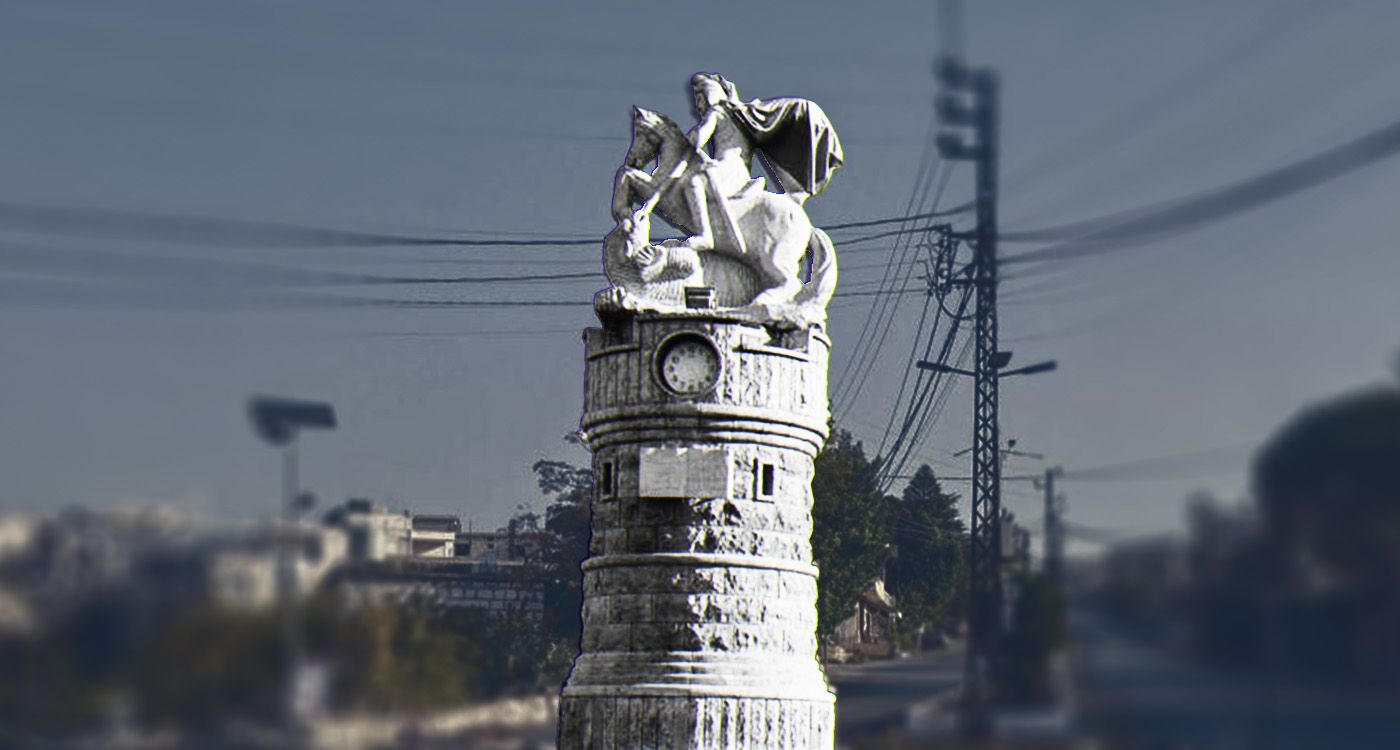
In South Lebanon, a land once graced by the footsteps of Christ, hope quietly persists.
Among the ruins of buildings, the scars of damaged roads and the remnants of once-vibrant villages, the echoes of the horrors from the last war still resonate, bearing witness to a painful history that refuses to fade. Yet, in Klayaa and Marjayoun, the streets are once more filled with life. People return from near and far to celebrate Easter and the Feast of Saint George.
Nestled in the heart of a stunning landscape, between the historic Beaufort Castle and Marjayoun, the quaint village of Klayaa radiates the peaceful charm of the South, proudly sheltered by its millennia-old olive trees.
This border village offers a sweeping panoramic view of the Marjayoun Plain and the majestic Mount Hermon. Steeped in legend and clad in knightly armor, Mar Gergis—also known as Gerios or Khodr—stands as Klayaa's knight, its patron and its revered protector. He is venerated by both Christians and Muslims across Lebanon, where he is known as Khodr, a symbol of nature's renewal with every spring.
Each year, on April 23, the Feast of Saint George is celebrated, a beloved occasion not only popular in the East but around the world. But how much do we truly know about Saint George? The details remain somewhat unclear. Some sources place his birth around 280 in Lydda, Syria, while others suggest Mytilene, in Cappadocia. Raised in the Christian faith, he pursued a military career in the Roman Army, eventually rising to the rank of tribune in Diocletian’s imperial guard. He suffered martyrdom, becoming a powerful testament to his unwavering faith.
A Tradition Revived After the War
For more than half a century, the southern border of Lebanon has been a zone of perpetual conflict. In this delicate region, Christian villages have often been targeted, despite their non-involvement.
Klayaa, a Christian village, stands as a poignant example. The villagers deeply believe in divine protection. Sonia recounts how Saint George safeguarded the town from attackers who were on the verge of launching an assault. “Saint George intervened to save us from foreign factions that were about to destroy the village. In the middle of the day, he made a thick white fog descend upon the plain. It was so dense that our enemies couldn’t see a thing. They had no choice but to turn back. Now, I know that Saint George will always come to protect us in times of danger,” she says.
Bravery, courage, nobility and heroism—Saint George embodies the perpetual struggle between good and evil. He triumphs over the evil represented by a dragon, freeing the village from its terror and ending the horrible nightmare that haunted it.
According to the legend, Saint George appeared in the area, leaving behind the hoof prints of his horse on the rocks. These marks have become symbols of protection and bravery. Believers frequently visit these sacred sites, not only to pray, but also to admire the stunning natural beauty that surrounds them. The marks left behind are regarded as signs of his divine presence, and pilgrimages are organized, drawing faithful from across the region.
Miled, a local farmer, shares that all the residents of Klayaa hold Saint George in profound reverence. When they seek to swear an oath of sincerity, they invoke the name “Saint George of Klayaa,” a testament to their commitment to truth. “It has become a powerful symbol in our daily lives, embodying the core values of honesty and loyalty in our culture,” he explains.
The ‘Kermesse:’ A Moment of Sharing
The celebration of Saint George’s Feast, held annually on April 23, unfolds over several days, commemorating the life and deeds of this legendary hero. While deeply intertwined with religious rituals, the festival has evolved into a vibrant cultural celebration, highlighting the village’s traditions, music, dance and traditional dishes. Each year, the “kermesse” (or traditional fair) draws people from neighboring towns, it is a living tradition that strengthens community bonds and underscores the vital role of the youth in preserving this cultural heritage.
The celebration begins with a solemn Mass, led by Father Antonios Eid Farah, the village priest. In his homily, he emphasizes the significance of Saint George, an iconic figure of the Christian faith. “Saint George is not just our patron saint, he embodies bravery and devotion,” he declares fervently. “By celebrating this feast, we renew our faith and reaffirm our commitment to our community.”
The fair features a wide range of activities that entertain people of all ages. Traditional food stalls line the church, while children enjoy carnival games, and live folk music fills the air, creating a lively and welcoming atmosphere. The village youth plays a central role in the event, taking charge of logistics and coordinating activities, demonstrating their unwavering commitment to preserving their cultural heritage.
Marie, a young volunteer, shares, “Helping organize the ‘kermesse’ is a true honor. It’s an opportunity for us to show our deep attachment to our traditions and unite different generations. We work as one to ensure this celebration remains unforgettable.” Samir, another volunteer, adds, “It’s a beautiful way to pass on our heritage to the younger generation. Watching the children have fun reminds me of my own childhood memories of this same feast.”
“This celebration is like a breath of fresh air. It reminds us that, no matter what we've been through, we can always come together to celebrate life. Saint George's Day is a moment of joy and communion, a way for us to affirm that we are still here, that our community is strong, and that we stand united,” shares Antoine.
The celebration is a powerful testament to the strength of the people, showing that even in the face of hardships, the community finds solace in its traditions and cultural heritage. “This year, we celebrate our resilience,” says Father Antonios Eid Farah. “The war tested our faith and unity, but today we stand with courage and hope. Each prayer, every song, is an act of defiance against suffering. We are united and determined to shape a better future.”
Saint George stands not only as a symbol of the battle against external evil, but also as a mirror of our eternal inner struggle against personal demons and the weight of a destiny shaped by hardship.



Comments